Best Time To Visit
When to go to the Galapagos Islands
A Galapagos Islands holiday can be enjoyed all year round. The temperatures are warmer between January and May, when there is also a greater chance of rain. In the latter half of the year, the weather is cooler. From the end of August for a month or so, the seas can be choppier; also at this time of year a sea mist can restrict visibility. If you have any more questions, you can visit our FAQ with here.
The islands have two seasons:
- Dec – May is the warm season which has slightly more rainfall and the sea is at its warmest and is usually calmer. The air temperatures are in the upper 70°s and lower 80°s F/ 25°-28°C
- June – Nov is the cooler season which is also drier and still has plenty of sunshine during the day. However the skies may be a little cloudier. The temperatures are in the low 70’s (F) / 21°-23°C. The water temperature is at its coolest, but still very pleasant.
January |
February |
|
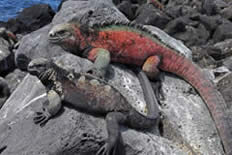 |
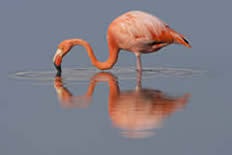 |
|
|
|
|
March |
April |
|
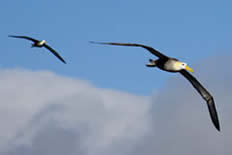 |
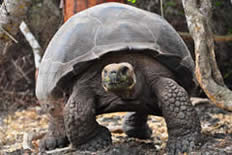 |
|
|
|
|
May |
June |
|
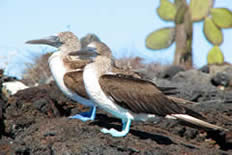 |
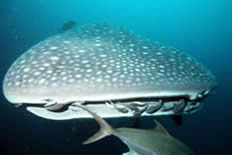 |
|
|
|
|
July |
August |
|
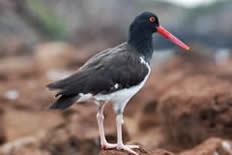 |
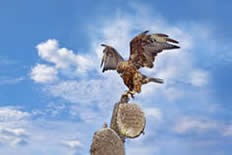 |
|
|
|
|
September |
October |
|
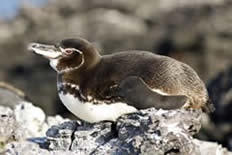 |
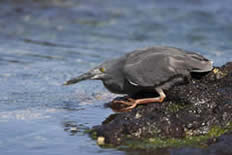 |
|
|
|
|
November |
December |
|
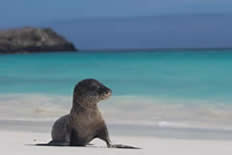 |
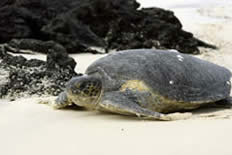 |
|
|
|
For Birdwatchers
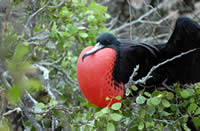 It’s almost impossible to go on a Galapagos Islands holiday without becoming an avid bird watcher! The songbirds such as the Darwin finches, the mocking birds and the Galapagos fly-catcher breed in rhythm with the warm temperatures. As a result they are easiest to see during the wet season from December to May.
It’s almost impossible to go on a Galapagos Islands holiday without becoming an avid bird watcher! The songbirds such as the Darwin finches, the mocking birds and the Galapagos fly-catcher breed in rhythm with the warm temperatures. As a result they are easiest to see during the wet season from December to May.
The lone species of hawk, the Galapagos hawk, is present all year round. There are many other easily observed species of sea bird. On North Seymour you can see magnificent Frigatebirds. Espanola is the only place in the world where the Waved albatross comes to land and breed.
Getting there
There are no direct flights the Galapagos Islands from the UK. Flying into Ecuador is the best approach. Daily flights operate from the Ecuadorian cities of Quito and Guayaquil on the Ecuadorean mainland to both Baltra and San Cristobal islands. Your flights are arranged in accordance with your Galapagos Island holiday schedule.
Time Zone
GMT -6 hours
Visas
The Galapagos Islands are part of Ecuador and no visas are required.
Health
There are no compulsory health requirements for visiting the Galapagos Islands. Always consult your doctor at least six weeks before travel and refer to this useful NHS website - Fit For Travel - for details of recommended vaccinations for travel to Ecuador and the Galapagos.
Things To Do
- Swim with sea lions and turtles
- Walk with a giant tortoise
- Visit the Charles Darwin Research Centre
- Sip cocktails at sunset on your boat
- See the blue-footed booby's mating ritual, one of the bird world’s greatest dances
In 1835, Charles Darwin arrived in the Galapagos Islands on board the HMS Beagle. He soon noticed the same thing that amazes travellers today, namely that many of the animals that roam the shores of the Galapagos, swim in its seas and fly among the islands, were unique. What struck him was not just that the birds, plants and reptiles were different from those on the mainland, but also that they were distinct from ones on neighbouring islands. The observations Darwin made during his five weeks in the archipelago played a vital part in his theory of evolution.
The islands were never connected to the mainland, so the wildlife that evolved here has not been hunted by man and have not developed an instinctive fear of humans.
Many of those on a holiday to the Galapagos Islands take an island tour by cruise ship, travelling between the islands at night and heading ashore every day for wildlife encounters with expert naturalist guides either on land or in the water. Alternatively, or in addition to a cruise, Galapagos holidays can be based on land in one of the hotels, simple lodges or tented camps on some of the larger islands such as Santa Cruz or Isabela. You can explore the islands in more detail on a land-based trip either on foot or on horse-back, as well as being able to enjoy a diversity of other activities such as mountain-biking, diving, kayaking and surfing not usually offered on Galapagos cruises.
Sarah Frankish
Travel Specialist
Looking for inspiration?
You'll find expert travel guides, holiday ideas and insider tips now on the Rainbow blog
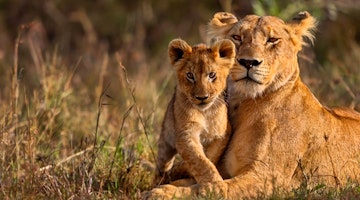
Top 5 First Time Safari Destinations
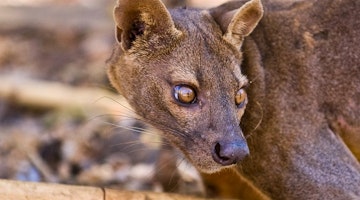
10 Strange Animals and Where to Go to See them


Salar De Uyuni - The World's Largest Salt Flat

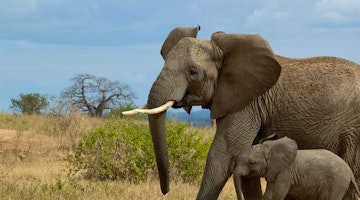
Top five South Africa Safari lodges
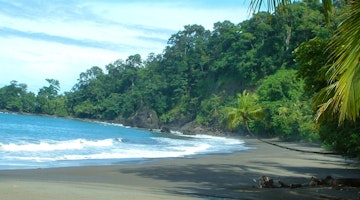
Sustainable Tourism In Corcovado National Park, Costa Rica

Why Choose Us?
Passionate travel experts
- We've been leading wildlife travel since our first South Africa tours over 25 years ago
- Our Travel Specialists have lived in their specialist area for years
- We work with local guides to immerse you deeper in our diverse range of experiences
Personal & tailor-made
- You'll speak to your own expert who'll share their first-hand knowledge
- We'll make your itinerary seamless with 24/7 emergency contact available
- Your Travel Specialist will listen to ensure you have the best chance of seeing the wildlife you love
Responsible by nature
- We take care to actively contribute to the conservation of environments we visit
- For select countries, we make a charitable donation on your behalf when you make your booking
- We've partnered with conservation experts and NGOs to curate responsible tours
For the latest travel advice from the Foreign, Commonwealth and Development Office check www.gov.uk/travelaware


